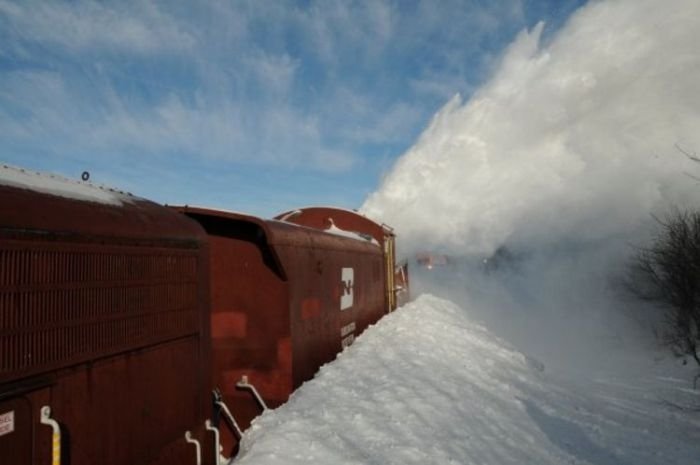|
|
Rotary Snowplow Train
|
The rotary was invented by Canadian dentist J.W. Elliot in 1869, but a prototype wasn't built until the Leslie Brothers constructed one in 1883.
Wedge snowplows were the traditional automated method of clearing snow from railroad tracks. These pushed snow off the tracks, deflecting it to the side. Deeper drifts, however, cannot be easily cleared by this method; there is simply too much snow to be moved. For this purpose, the rotary snowplow was devised.
In areas of particularly deep snowfall, such as California's Donner Pass, railroads sometimes would create a train consisting of a rotary snowplow at each end (with the blade ends pointing away from each other), and two or three locomotives coupled between them. With a plow on each end, the train would be able to get itself back to its starting location even if the snowfall was heavy enough to obscure the tracks it had just passed over. Such a train would also be able to efficiently clear multiple track mainlines as it could make a pass in one direction on one track and then reverse direction and clear the next track. This practice became standard for the Southern Pacific Railroad on Donner Pass following the January 1952 stranding of the City of San Francisco; during attempts to clear the avalanches that had trapped the train, two rotary plows were themselves trapped by further avalanches, and the crew of a third was killed when their plow was directly hit by an avalanche.
Early rotaries had steam engines inside their carbodies to power the blades; a few are still in working order, and in particular one on the White Pass & Yukon Route in Alaska performs annual demonstration runs through thick snow for the benefit of photographers and enthusiasts. Newer constructed rotaries are either diesel or electric powered; in the latter case, an electric supply is required.
|
|









